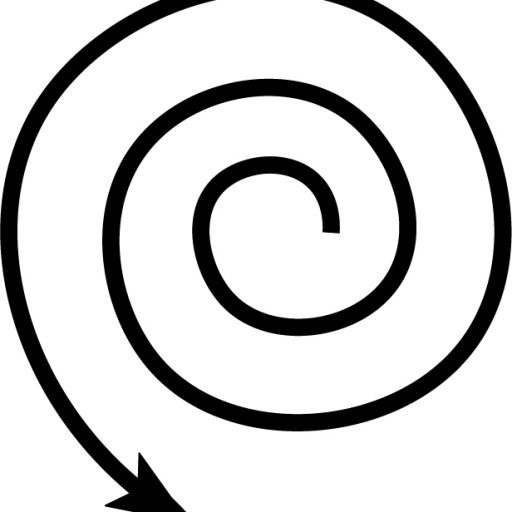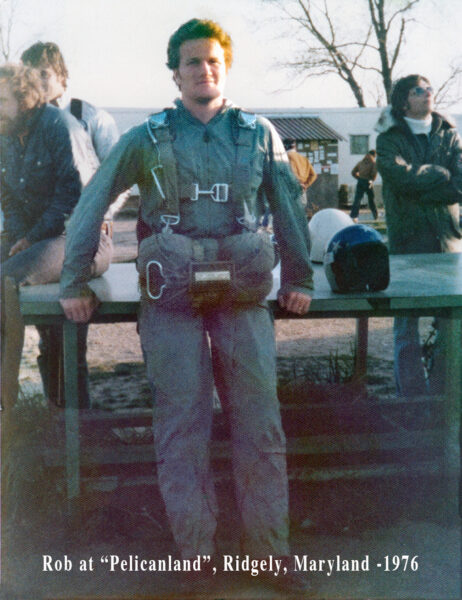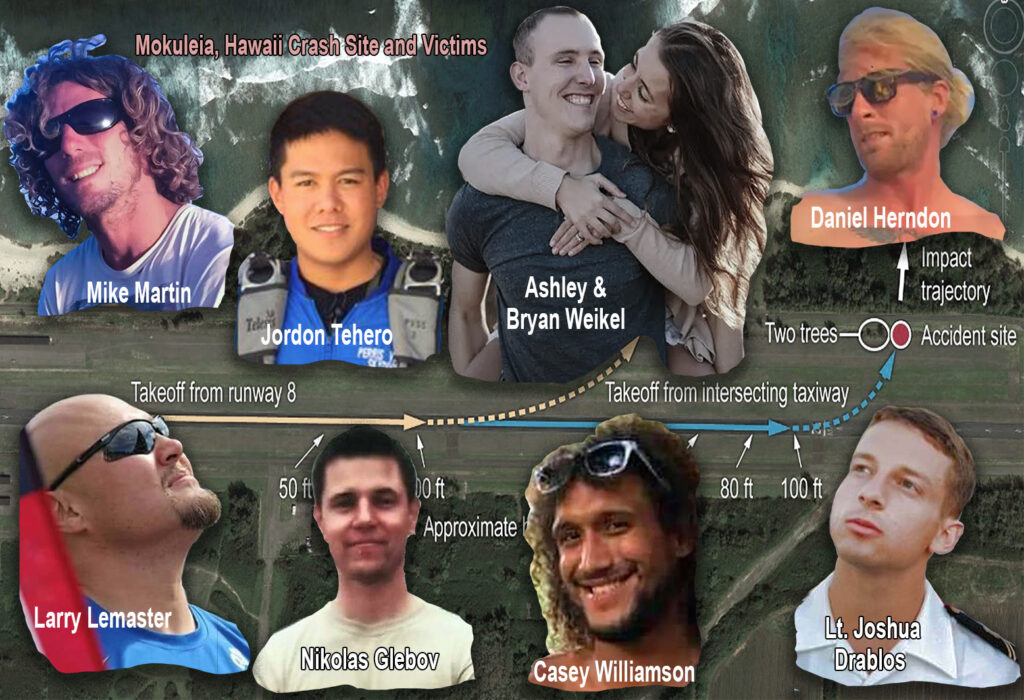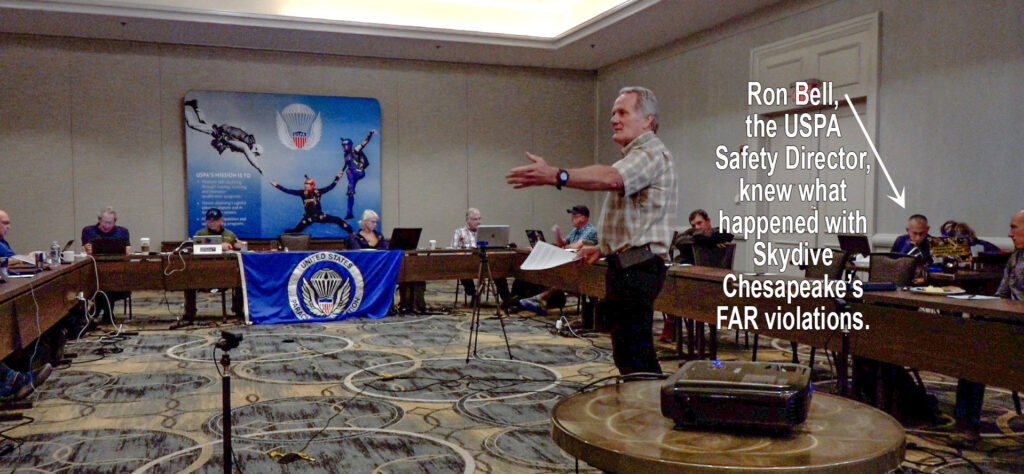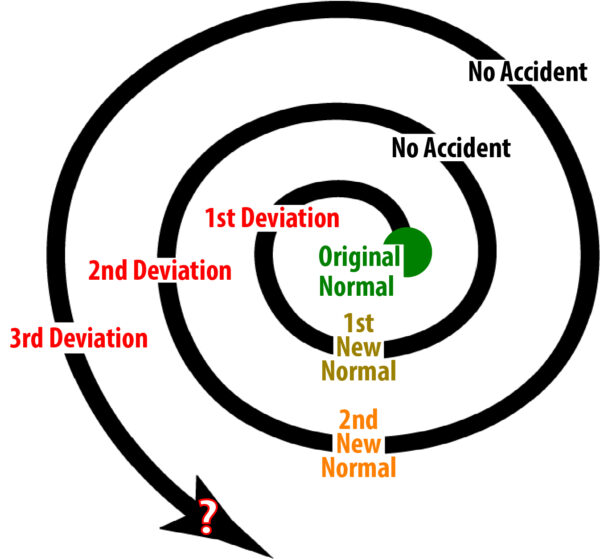NTSB Witness
NTSB Witness.gov
Witness.gov is an email address to send messages to the National Transportation Safety Board on their investigations. I wrote to them on August 9, 2024 about the Special Investigation Report SIR-08/01 and about the accident on Mokuleia, Hawaii on June 21, 2019.
My experience at Skydive Chesapeake is quite like the operation in Hawaii, however the behavior of the United States Parachute Association should be of note to NTSB. In their response to the SIR Report of 2008 the USPA told them, in 2011, that Aircraft Operations Manuals and Pilot Training Syllabus had been written. I recently found out that the USPA has done nothing to see that those are used.
Less the illustrations, the following was sent to NTSB:
I.Avid Skydiver
I have been an avid skydiver, off and on, since 1975. I am a D License holder with the United States Parachute Association. In 2020 I helped the managers of Skydive Delmarva in Laurel, Delaware move too Gooden Airpark in Ridgely, Maryland. The owner, John Gooden went to high school with my son.
I decided to get my instructors rating with that new drop zone, Skydive Chesapeake. It was managed by Ben Harris and Chris Derbak.
II. Safety Issues at Skydive Chesapeake
A. Lost Control of Piper Navaho
Unsafe activities occurred there after it opened in 2020. On December 11, 2020, they leased a Piper PA31-310 Navajo (N6719L). The pilot was not trained on it and on the first jump he lost control of the airplane. He immediately regained control but it was disturbing.
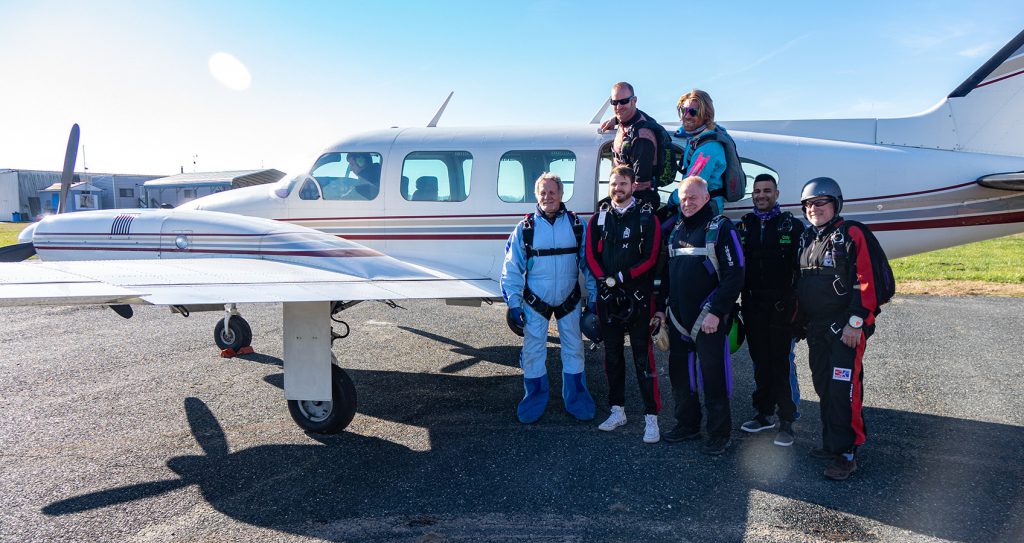
B. Violation of Seat Belts regulations, FAR § 91.107
They operated that airplane in 2021 and flew it repeatedly without enough seat belts for each jumper. On February 25, 2021, a video depicts this. Derbak was one of the people who made that jump. He is sitting in the copilot’s chair!
Shortly after that I was on that plane when another skydiver, who has considerable experience as a jump pilot, warned him (the same one who last control in February) that if he was flying with one engine out, with an overloaded plane that he would have a distinct problem. The pilot was scared. As I said, he didn't have training and I didn’t have a seat belt.

That weekend, I wrote to both operators of the drop zone to inform them of the pilot and all the other questionable activities.
III. Kicked Out of Skydive Chesapeake
A. No USPA support
One week later I was suspended from the drop zone. At the meeting when I was suspended from the drop zone, I was told by Harris that Ron Bell, the USPA Safety Director, had been given my letter. My perspective on it couldn’t have come from Harris, so I wrote to Mr. Bell to explain it.
Bell was sick with Covid 19, so my letter was sent to the Eastern Region Director, Shauna Finley. Harris never did send my letter to Bell. Finley and Bell knew what happened with the FAR violations and the other items but never did anything about it. This was a few months after Harris signed a Group Membership pledge to honor FAR Regulations.
My suspension lasted a month. When Harris knew that the USPA was informed he permanently banned me from the drop zone.
IV. Special Investigation Report SIR-08/01
What’s happening at Skydive Chesapeake is exactly what happened on Mokuleia, Hawaii on June 21, 2019. That pilot was untrained. That aircraft was not airworthy for its mission.
In their report by the NTSB in 2008, there were 12 Recommendations. Many of them had to do with aircraft maintenance guidance packets and pilot training. In 2011, the USPA, in response to the Report, wrote a Flight Operations Handbook template and Jump Pilot Training Syllabus template for drop zones to use to make their operations safer. However, the USPA never did anything to make those templates effective.
I know this because, in February of 2024 I wrote to the current USPA Eastern Region Director, Dave Grabowski, of what drop zones in his region have aircraft operations manuals and new and current pilot training, according to the USPA 2011 templates. After thirteen years it isn’t known by the USPA if any drop zones are using them. Grabowski’s answer to my question was that those documents are “private information”. He and the USPA have no knowledge who has those items and who is using them.
According to what happened to the Oahu Parachute Center in 2019 and what I know of Skydive Chesapeake, neither of those drop zones are using them. Both have had deaths.
V. DZdeviance.org
I decided to write a blog. It’s at DZDeviance.org. The name derives from what happened on the January 1986 accident of the Space Shuttle Challenger. NASA deviated from safety and the USPA and their drop zones are doing it as well.
However, its worse for the USPA. They never actually had safety methods to be deviated from. Templates were written by the USPA in 2011, but they aren’t used today. In their final report in 2008 the NTSB was satisfied, but those templates aren’t used. If they were, and if they were part of Safety Management System plan, the USPA and every jumper would know about it.
Jim Couch wrote an article in the USPA’s magazine in 2020. It highlights a crash in 1995 that is an exact example of “Normalization of Deviance” as NASA identifies it. A pilot, ten skydivers and a person on the ground were killed in that September 10, 1995, accident.
VI. Other Noncompliance
A. Advisory Circular AC 105-2E
In 1998 an Evaluation of Improved Restraint Systems for Sport Parachutes by the FAA Civil Aeromedical Institute and the Parachute Industries Association was produced. It has been in the Advisory Circular since 2011. The USPA has never done anything to implement this on any drop zone.
The Sullivan, Missouri Crash Report on July 29, 2006 and the Crash Injury report illustrates how bad restraints kill people and make them quad and paraplegics. The analyses showed that the peak deceleration on that flight was between 6.6 G and 19.7 G’s. These ranges fall within survivable limits according to the report but not from a single point and suspended like a fish on a hook. That’s what most parachutists have during such a crash.
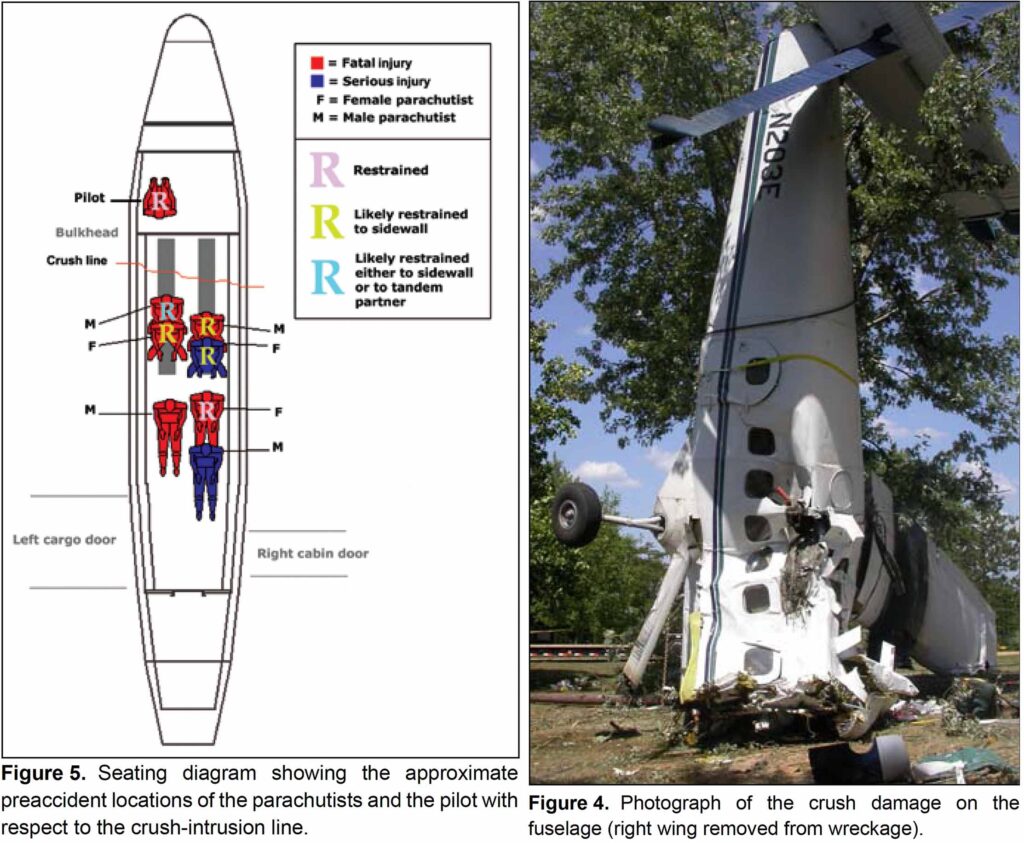
B. No SMS, Safety Management System
The USPA has a page on their web site that discusses Safety Management System. In my blog I proposed a safety plan to solve this. It’s in the article in DZDeviance.org, Proposal for Reform.
I went to the USPA Board Meeting where I proposed that plan. Michael Wadkins, Chair of the Safety Committee, asked me what USPA documents I would change if that were to happen. I did that in August of 2022 and received no response.
USPA has said that a SMS plan should be in drop zones, but they have done nothing to do that. It’s the same with Aircraft Operations Plan’s, restraint systems and pilot training.
VII. Safety and Training Advisors, S&TA’s
USPA has a S&TA at every drop zone and they are usually paid by the owner. At Skydive Chesapeake there are two S&TA’s, the first jump instructor and Harris. Both receive most of their income from the drop zone. There are extreme conflicts of interest there.
VIII. USPA Directors Come and Go
The person who responded to the NTSB’s Special Investigation Report SIR-08/01 in 2008 isn’t the current director. The directors who were there at that time put together an operations plan and something that could serve to verify pilot’s training. All they are now, is templates and no one at the USPA is interested in solving the problems in the 2008 report. If the NTSB or the FAA or Congress expects anything to happen for restraints, aircraft operations or pilot training, or a SMS program, it won’t have the USPA, as it currently exists to do anything about it
It’s only been four years and Skydive Chesapeake has already had a death. The person only had three jumps, and she was supervised on that jump, and trained, by one of those S&TA’s. I wasn’t there, but I’m sure that what happened to her is partially an aspect of the safety culture there, which doesn’t exist. I’m also sure that if the USPA had more to with the drop zones and an actual SMS plans, the NTSB would be satisfied.
